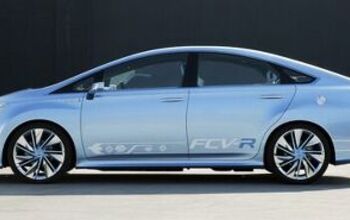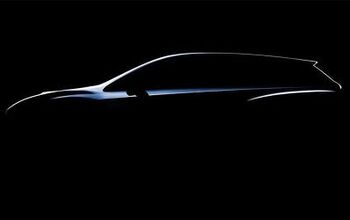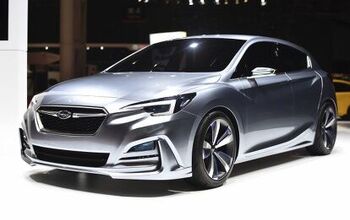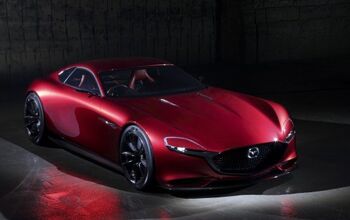Tokyo Motor Show: Are The Japanese Really Back?
Three of the world’s most important auto shows began last week. Since my invitations to the various press events must have been lost in the mail I, like virtually everyone else in the world, followed them over the internet. I’m OK with that, really. I hate fighting the crowds and by the time a show closes high resolution photos of the most important cars are always all over the world-wide-web, anyhow. With the photos are the journalists’ impressions. Some are good and some are bad, but they all make me think. For example, there’s this article from the Top Gear website on the Tokyo motor show that asserts, on the strength of the cars at this year’s show, “Japan is back.” Hold on – Really?
To be sure there were some important and exciting cars at this year’s Tokyo motor show. Honda showed us a new NSX and the S660 sport compact that compares favorably to the Beat kei class sports car that Honda produced back in the last century. Nissan showed us the amazing three-seat, electric “Bladeglider,” a hotted up Nismo GTR and the retro themed IDx. Toyota’s performance car offerings came in the form of the Lexus RC and a convertible FT86. While Toyota ripped the top off of their Toybaru twin, Subaru went the opposite route and gave baby some back with their Cross Sport. So far as I could glean, that was about it for cars intended to stir the hearts and minds of enthusiasts. That would have made for a pretty small show though, so augmenting the really interesting stuff were was a whole slew of hybrid/electric/gas, etc SUVs, sedans and city cars intended to appeal to the masses.
From my perspective what we got are some new toys of the uber rich, two small cars that my all-American ass won’t fit into, a couple of modifications on a car I probably won’t buy anyhow and one wanna-be-retro Nissan that might actually have some possibilities if they don’t screw it up with a powertrain that serious enthusiast wouldn’t want. The emphasis on products with hybrid or alternative energy powertrains and other technical innovations says some good things about state of Japanese industry and the many different body styles on display indicates that the Japanese have noted the success of Korean cars’ design language and are finally looking somewhere other than Mercedes for inspiration, too. Good news for sure, but does any of it mean Japan is back?
For me, the glory days of Japanese cars happened roughly between 1985 and 1995. The cars of that era had good, solid lines and, while the designs weren’t daring, they did have their own unique sense of style. There was technical innovation too and it came wrapped up in practical packages. Real performance was offered across all the price ranges and the variety of new cars was enormous. There was something there for everyone and if you could not afford a Twin Turbo Supra or a Turbo 300ZX, you could, at the very least, take home on of the good looking down-market alternatives: the AE86 Twin-Cam Corolla or the 200SX Turbo. Today, that wide aray of choices is no longer a part of Japan Inc.’s current line-up.
I’m not sure why that is, but in the process of writing this article it suddenly hit me that the cars on display at this year’s Tokyo motor show says something about how our society has become ever more divided over the past couple of decades. It doesn’t take an economist to point out that the rich have gotten richer and the rest of us poorer. The market reflects that reality. The rich get supercars, those of us in the middle get family trucksters and the odd toy while the unwashed masses receive battery powered practicality. The choices are gone and fun is being increasingly reserved for those who can afford it. It wasn’t that ay 20 years ago and the sad truth is that Japan isn’t anywhere close to being back. But then, none of us are, are we?
Thomas Kreutzer currently lives in Buffalo, New York with his wife and three children but has spent most of his adult life overseas. He has lived in Japan for 9 years, Jamaica for 2 and spent almost 5 years as a US Merchant Mariner serving primarily in the Pacific. A long time auto and motorcycle enthusiast, he has pursued his hobbies whenever possible. He also enjoys writing and public speaking where, according to his wife, his favorite subject is himself.
More by Thomas Kreutzer
Latest Car Reviews
Read moreLatest Product Reviews
Read moreRecent Comments
- Akear Stellantis is a lost cause in America. Why does anybody care?
- Redapple2 UAW may have a valid issue. I ve been in plants that were bad. ....and i greatly dislike the UAW. I may need a 3/4 ton pick up. It will be a hecho Ram gas.
- TheMrFreeze So basically no manual transmissions in US cars after 2029.I just raised one finger in the general direction of NHTSB's main office. Guess which finger it is!
- TheMrFreeze Wife drives a Fiat 500 Turbo 5-speed (135hp vs. 160 in the Abarth), it's a lot of fun to drive and hasn't given us any headaches. Maintenance on it is not as bad as you'd think for such a cramped engine compartment...Fiat did put some thought into it in that regard. Back seat is...cramped...but the front is surprisingly roomy for what it is.I honestly wouldn't mind having one myself, but yeah, gotta have a manual trans.
- Bkojote Tesla's in a death spiral right now. The closest analog would be Motorola circa 2007.The formula is the exact same. -Vocal CEO who came in and took credit for the foundation their predecessor while cutting said efforts behind successful projects.-A heavy reliance on price/margin cuts and heavy subsidies to keep existing stock moving. The RAZR became a $99 phone after starting out as a $399 phone, the same way a Model 3 is now a $25k car.-Increasing focus on BS projects over shipping something working and functional to distract shareholders from the failures of current products. Replace "iTunes Phone" (remember that?) with "Cybertruck" and when that's a dud focus on "Java-Linux" the same way they're now focusing "Robotaxis".-Increasingly cut away investment in quality-of-ownership things. Like Motorola, Tesla's cut cut cut away their development, engineering, and support teams. If you ever had the misfortune of using a Motorola Q you're familiar with just how miserable Tesla Autopilot is these days.-Ship less and less completed products as a preview of something new. Time and time again at CES/Trade Shows Motorola was showing half-working 'concept' devices. The Cybertruck was announced 5 years ago yet functionally is missing most of its features- and the ones it has don't work. And I mean basic stuff- the AWD logic is embarrassingly primitive. A lot of Tesla hyperbole focuses on either he's a 4D-chess playing genius visionary or all of Tesla's being propped up by gov't mandates. But the reality is this company hasn't delivered any meaningful product evolution in the better half of this past decade.


































Comments
Join the conversation
Dear author, what tripe; the "rich get richer and we the poor get poorer". Perhaps Unions, fairness, and buying Jap cars have gotten us where we are now. Perhaps a real Government job, is in order, besides media...at least it pays better.
With the new car offerings now days I'd be very hard pressed to buy a new Japanese one and at this point in my life I can afford a lot of car. Honda is making their take of Camry and Corolla, while everyone else tries to copy those two in my mind. Just mindless sea of SUVs and hybrids. I'll be holding on to my '08 Legacy GT for quite a long time.